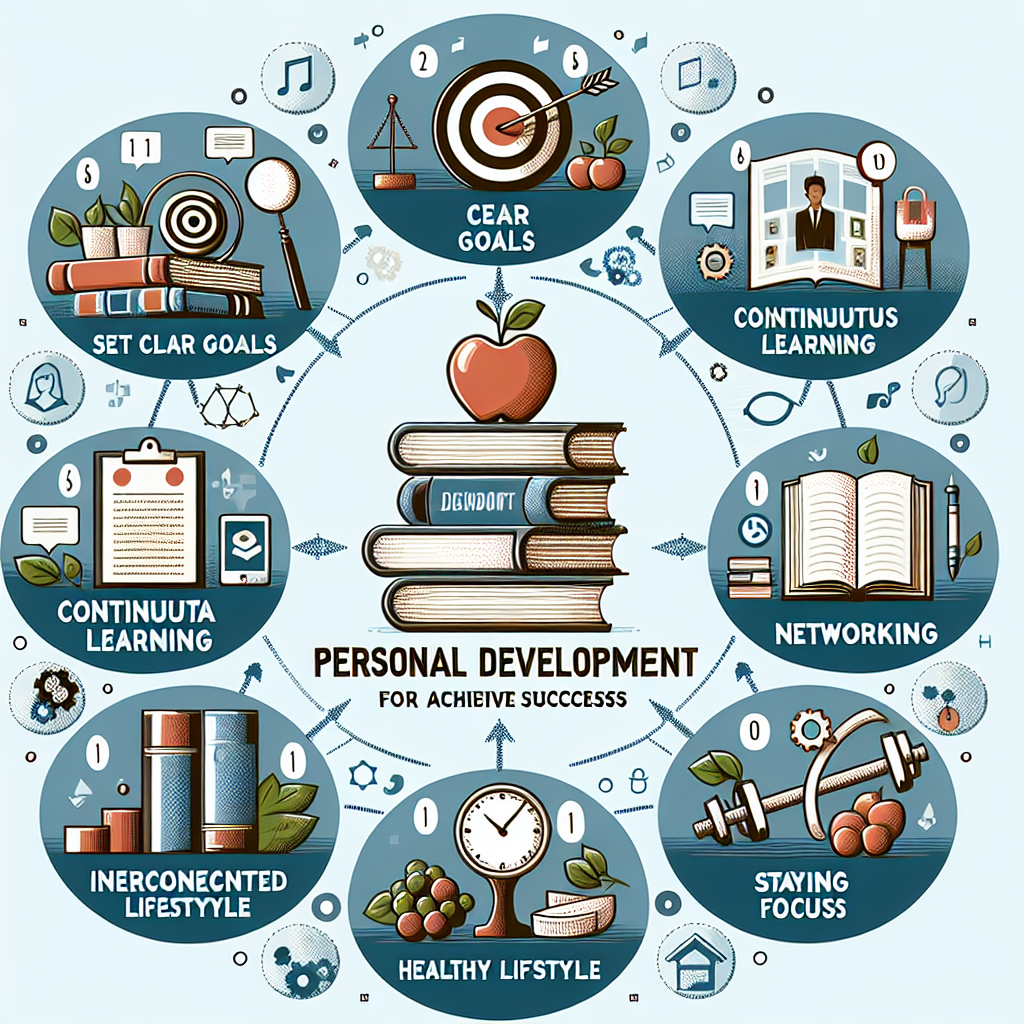The Art of War by Sun Tzu: Strategic Lessons for Business and Life
Understanding Sun Tzu’s Principles: Applying Ancient Wisdom to Modern Business
Sun Tzu’s ”The Art of War” is a timeless classic that has transcended its original purpose as a military treatise to become a cornerstone of strategic thinking in various fields, including business and personal development. Written over two millennia ago, its principles remain remarkably relevant today, offering profound insights into leadership, strategy, and human nature. Understanding Sun Tzu’s principles can provide valuable guidance for navigating the complexities of modern business and life.
One of the core tenets of Sun Tzu’s philosophy is the importance of preparation and planning. He famously stated, ”Every battle is won before it is fought,” emphasizing that success is often determined by the groundwork laid beforehand. In the business world, this translates to thorough market research, meticulous planning, and strategic foresight. Companies that invest time in understanding their market, competitors, and internal capabilities are better positioned to make informed decisions and seize opportunities. This principle also applies to personal endeavors, where setting clear goals and devising a plan to achieve them can significantly enhance one’s chances of success.
Another key principle from ”The Art of War” is the concept of adaptability. Sun Tzu advised, ”In the midst of chaos, there is also opportunity.” This highlights the importance of being flexible and responsive to changing circumstances. In today’s fast-paced business environment, companies that can quickly adapt to new trends, technologies, and consumer preferences are more likely to thrive. This adaptability is not just about reacting to change but also about anticipating it and being proactive. For individuals, embracing change and being open to new experiences can lead to personal growth and unexpected opportunities.
Sun Tzu also emphasized the value of understanding both oneself and the competition. He wrote, ”If you know the enemy and know yourself, you need not fear the result of a hundred battles.” In business, this means having a deep understanding of your company’s strengths and weaknesses, as well as those of your competitors. This knowledge allows businesses to leverage their unique advantages while mitigating potential threats. On a personal level, self-awareness and an understanding of others can improve relationships and decision-making, leading to more effective interactions and outcomes.
Furthermore, Sun Tzu’s teachings underscore the significance of strategic alliances. He believed that forming alliances could be a decisive factor in achieving victory. In the business realm, this principle is evident in the importance of networking, partnerships, and collaborations. Building strong relationships with other businesses, stakeholders, and even competitors can create synergies that drive innovation and growth. For individuals, cultivating a supportive network of friends, mentors, and colleagues can provide valuable resources and opportunities for advancement.
Additionally, Sun Tzu’s focus on the psychological aspects of warfare offers insights into leadership and influence. He understood that morale and motivation are critical components of success. In business, effective leaders inspire and motivate their teams, fostering a positive and productive work environment. They understand the power of communication, empathy, and leading by example. Similarly, in personal life, being a source of encouragement and support for others can strengthen relationships and create a sense of community.
In conclusion, Sun Tzu’s ”The Art of War” offers a wealth of strategic wisdom that is highly applicable to modern business and life. By embracing principles such as preparation, adaptability, self-awareness, strategic alliances, and effective leadership, individuals and organizations can navigate challenges and achieve their goals. The ancient wisdom of Sun Tzu continues to illuminate the path to success in our contemporary world, proving that the art of strategy is indeed timeless.
The Role of Deception in Business Strategy: Insights from The Art of War
In the realm of business strategy, the ancient wisdom of Sun Tzu’s ”The Art of War” offers timeless insights that continue to resonate with modern leaders. One of the most compelling aspects of Sun Tzu’s teachings is the role of deception in achieving strategic objectives. While the concept of deception might initially evoke negative connotations, within the context of strategy, it is a nuanced and sophisticated tool that can be employed ethically to gain a competitive edge.
Sun Tzu famously stated, ”All warfare is based on deception.” This principle underscores the importance of creating and maintaining an element of surprise, which can be a decisive factor in both military and business contexts. In the business world, deception does not necessarily mean dishonesty or unethical behavior. Rather, it involves the strategic use of information, misdirection, and timing to outmaneuver competitors and achieve desired outcomes.
For instance, consider the launch of a new product. A company might choose to keep details under wraps, creating a sense of mystery and anticipation. By controlling the flow of information, the company can prevent competitors from copying or countering their innovation before it hits the market. This approach not only builds excitement among consumers but also positions the company as a leader in innovation, thereby enhancing its competitive standing.
Moreover, deception can be employed in negotiations. By carefully managing what information is revealed and when, a business can create leverage and secure more favorable terms. For example, a company might downplay its interest in a particular deal to encourage the other party to offer better conditions. This tactic, when used judiciously, can lead to mutually beneficial agreements without compromising integrity.
Transitioning to another aspect, Sun Tzu also emphasized the importance of adaptability and flexibility in strategy. Deception plays a crucial role here as well. By presenting a façade of strength or weakness, a business can influence competitors’ perceptions and actions. For example, a company might project an image of financial stability to deter potential takeovers or aggressive moves by rivals. Conversely, feigning vulnerability could lure competitors into a false sense of security, only for the company to strike when the time is right.
Furthermore, the digital age has amplified the potential for strategic deception. With the vast amount of data available, businesses can analyze competitors’ behaviors and craft strategies that exploit their weaknesses. For instance, a company might use social media to gauge public sentiment and adjust its marketing tactics accordingly, creating the illusion of a grassroots movement or trend. This not only enhances brand perception but also directs consumer behavior in a way that benefits the company.
However, it is crucial to approach the concept of deception with a strong ethical foundation. The goal is not to deceive stakeholders or engage in fraudulent activities but to use strategic thinking to navigate complex business landscapes. Transparency and honesty remain paramount in building long-term trust and credibility.
In conclusion, the role of deception in business strategy, as illuminated by Sun Tzu’s ”The Art of War,” is a multifaceted and powerful tool. When used ethically and strategically, deception can create opportunities, outmaneuver competitors, and achieve objectives that might otherwise be unattainable. By understanding and applying these ancient principles, modern business leaders can navigate the complexities of today’s competitive environment with greater acumen and success.
Leadership and Decision-Making: Lessons from Sun Tzu for Today’s Executives
Sun Tzu’s ”The Art of War” is a timeless classic that has transcended its original purpose as a military treatise to become a cornerstone of strategic thinking in various fields, including business and leadership. The principles laid out by Sun Tzu over two millennia ago continue to offer valuable insights for today’s executives, particularly in the realms of leadership and decision-making. By examining these ancient strategies, modern leaders can cultivate a more nuanced approach to navigating the complexities of the contemporary business landscape.
One of the most compelling lessons from ”The Art of War” is the importance of adaptability. Sun Tzu emphasizes that rigidity is a liability, while flexibility is a strength. In the fast-paced world of business, conditions can change rapidly, and the ability to pivot in response to new information or shifting circumstances is crucial. Executives who embrace adaptability are better equipped to handle unexpected challenges and seize emerging opportunities. This principle encourages leaders to foster a culture of innovation and continuous improvement within their organizations, ensuring that they remain competitive and resilient in the face of change.
Another key takeaway from Sun Tzu’s work is the significance of understanding both oneself and one’s competitors. The famous adage, ”If you know the enemy and know yourself, you need not fear the result of a hundred battles,” underscores the value of self-awareness and competitive intelligence. For business leaders, this means conducting thorough internal assessments to identify strengths and weaknesses, as well as keeping a close eye on market trends and competitor activities. By gaining a comprehensive understanding of their own capabilities and the external environment, executives can make more informed decisions and develop strategies that leverage their unique advantages.
Sun Tzu also highlights the critical role of strategic planning. He advocates for meticulous preparation and the careful consideration of all possible scenarios before taking action. In the business context, this translates to the development of robust strategic plans that account for various contingencies. Effective leaders invest time and resources in scenario planning, risk management, and strategic foresight, enabling them to anticipate potential obstacles and devise proactive solutions. This level of preparedness not only enhances decision-making but also instills confidence among team members, fostering a sense of stability and direction.
Moreover, Sun Tzu’s emphasis on the element of surprise can be particularly relevant for business leaders seeking to outmaneuver their competitors. By keeping their strategies and intentions discreet, executives can maintain a competitive edge and execute bold moves that catch rivals off guard. This approach requires a delicate balance between transparency and confidentiality, ensuring that key stakeholders are informed while safeguarding sensitive information. The ability to surprise competitors can lead to significant advantages, such as capturing market share or launching innovative products that redefine industry standards.
In addition to these strategic insights, Sun Tzu’s teachings also underscore the importance of effective leadership. He advocates for leaders who inspire trust, demonstrate integrity, and lead by example. In today’s business environment, these qualities are essential for building strong, cohesive teams and fostering a positive organizational culture. Executives who embody these traits are more likely to earn the respect and loyalty of their employees, driving higher levels of engagement and performance.
In conclusion, ”The Art of War” by Sun Tzu offers a wealth of strategic lessons that remain highly relevant for modern executives. By embracing adaptability, understanding themselves and their competitors, engaging in meticulous planning, leveraging the element of surprise, and exemplifying effective leadership, today’s business leaders can navigate the complexities of their environment with greater confidence and success. These timeless principles serve as a valuable guide for those seeking to excel in the dynamic world of business and leadership.
Competitive Analysis: How Sun Tzu’s Tactics Can Give You an Edge
Sun Tzu’s ”The Art of War” is a timeless classic that has transcended its original purpose as a military treatise to become a cornerstone in the fields of business and personal development. The strategic lessons embedded within its pages offer profound insights into competitive analysis, providing a framework that can give you an edge in various aspects of life. By understanding and applying these principles, you can navigate complex environments with greater confidence and effectiveness.
One of the key tenets of Sun Tzu’s philosophy is the importance of knowing both yourself and your opponent. In the context of business, this translates to a deep understanding of your own strengths and weaknesses, as well as those of your competitors. By conducting a thorough SWOT analysis—assessing strengths, weaknesses, opportunities, and threats—you can develop a more nuanced strategy that leverages your advantages while mitigating your vulnerabilities. This self-awareness is crucial for making informed decisions that align with your long-term goals.
Transitioning from self-awareness to the external environment, Sun Tzu emphasizes the significance of gathering intelligence. In business, this means staying informed about market trends, customer preferences, and competitor activities. By keeping your finger on the pulse of the industry, you can anticipate shifts and adapt proactively rather than reactively. This proactive approach allows you to seize opportunities as they arise and avoid potential pitfalls, thereby maintaining a competitive edge.
Moreover, Sun Tzu advocates for the element of surprise as a powerful tool in any strategic endeavor. In a business setting, this could involve innovative product launches, unexpected marketing campaigns, or strategic partnerships that catch competitors off guard. By thinking outside the box and executing plans that are not easily predictable, you can disrupt the status quo and position yourself as a market leader. This element of surprise not only captures attention but also creates a dynamic environment where you set the pace.
Another critical lesson from ”The Art of War” is the value of flexibility and adaptability. Sun Tzu advises against rigid strategies, advocating instead for a fluid approach that can adjust to changing circumstances. In today’s fast-paced business world, this principle is more relevant than ever. Companies that can pivot quickly in response to new information or market conditions are better equipped to thrive in an unpredictable landscape. This adaptability extends to personal development as well, where being open to new experiences and learning opportunities can lead to continuous growth and improvement.
Furthermore, Sun Tzu underscores the importance of efficient resource management. In business, this involves optimizing your use of time, money, and human capital to achieve maximum impact. By prioritizing tasks that offer the highest return on investment and eliminating wasteful practices, you can streamline operations and enhance productivity. This efficiency not only boosts your bottom line but also frees up resources that can be reinvested in innovation and expansion.
Lastly, Sun Tzu’s teachings highlight the significance of morale and leadership. A motivated and cohesive team is more likely to achieve success than one that is disjointed and demoralized. Effective leaders inspire confidence, foster collaboration, and create an environment where individuals feel valued and empowered. By cultivating a positive organizational culture, you can harness the collective strengths of your team to overcome challenges and achieve shared objectives.
In conclusion, the strategic lessons from Sun Tzu’s ”The Art of War” offer valuable guidance for competitive analysis in both business and life. By knowing yourself and your environment, leveraging the element of surprise, remaining adaptable, managing resources efficiently, and fostering strong leadership, you can gain a significant edge in any competitive arena. These timeless principles serve as a roadmap for navigating the complexities of modern life with wisdom and foresight.
The Importance of Flexibility and Adaptability: Sun Tzu’s Guide to Navigating Change
Sun Tzu’s ”The Art of War” is a timeless classic that has transcended its original purpose as a military treatise to become a guiding light for leaders in various fields, including business and personal development. One of the most compelling lessons from this ancient text is the importance of flexibility and adaptability in navigating change. In a world that is constantly evolving, these principles are more relevant than ever.
Sun Tzu emphasizes that the ability to adapt to changing circumstances is crucial for success. He famously states, ”In the midst of chaos, there is also opportunity.” This insight underscores the idea that change, while often perceived as a threat, can also present new possibilities. For business leaders, this means that staying rigid in strategies and operations can be detrimental. Instead, embracing change and being willing to pivot when necessary can lead to innovative solutions and competitive advantages.
Moreover, Sun Tzu’s teachings highlight the importance of understanding the environment and being prepared to adjust plans accordingly. He advises, ”Do not repeat the tactics which have gained you one victory, but let your methods be regulated by the infinite variety of circumstances.” This principle is particularly relevant in today’s fast-paced business world, where market conditions, consumer preferences, and technological advancements are in a constant state of flux. Companies that thrive are those that continuously assess their surroundings and are agile enough to modify their strategies in response to new information.
Transitioning from the battlefield to the boardroom, the concept of flexibility can be seen in the way successful businesses approach problem-solving. Rather than sticking to a single plan, effective leaders develop multiple contingencies and are ready to implement them as situations evolve. This proactive mindset not only mitigates risks but also positions organizations to capitalize on unforeseen opportunities. For instance, during economic downturns, companies that can quickly adapt their business models often emerge stronger, while those that remain inflexible may struggle to survive.
In addition to strategic flexibility, Sun Tzu also advocates for adaptability in leadership styles. He notes, ”The general who wins a battle makes many calculations in his temple before the battle is fought.” This suggests that effective leaders must be versatile, capable of adjusting their approach based on the needs of their team and the demands of the situation. In practice, this means that a leader might need to be authoritative in times of crisis but more collaborative when fostering innovation. By being adaptable, leaders can inspire confidence and drive their teams toward success, regardless of the challenges they face.
Furthermore, Sun Tzu’s wisdom extends to personal development, where flexibility and adaptability are equally vital. In our personal lives, we often encounter unexpected changes that require us to rethink our goals and strategies. Whether it’s a career shift, a change in personal relationships, or unforeseen obstacles, the ability to adapt can make the difference between thriving and merely surviving. Embracing change with a positive attitude and a willingness to learn can lead to personal growth and new opportunities.
In conclusion, Sun Tzu’s ”The Art of War” offers profound insights into the importance of flexibility and adaptability in both business and life. By recognizing that change is inevitable and preparing to navigate it with agility, we can turn potential challenges into opportunities for success. As we continue to face an ever-changing world, these timeless principles serve as a valuable guide for achieving our goals and overcoming obstacles.




















